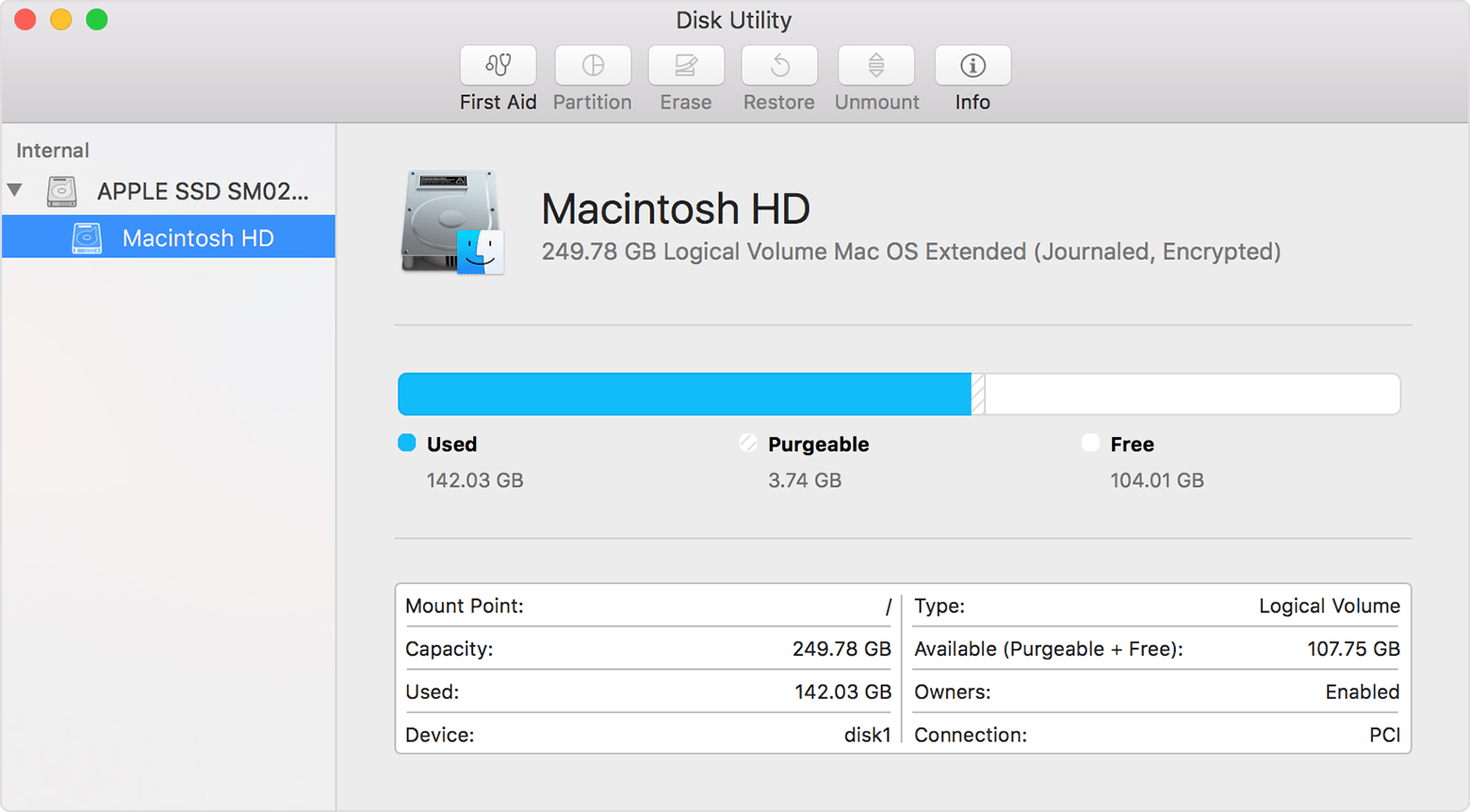Mac Disk First Aid Software
| Developer(s) | Apple Inc. |
|---|---|
| Stable release | |
| Operating system | Classic Mac OS |
| Type | software utility |
| Website | support.apple.com/kb/TA26794 |
Disk Utility’s First Aid should be run to ensure the startup drive and the target drive do not have any issues that could impact installing macOS Catalina. A new installer will usually take care of the issue, but there’s another problem that could lead to the same message: a damaged target drive for the installation. Nov 19, 2019 With the advent of OS X El Capitan, Apple made a few changes to how the Disk Utility First Aid feature works.The main change is that First Aid no longer has the ability to verify a drive independently of repairing it. Now when you run First Aid, Disk Utility will verify the selected drive, and if errors are found, automatically attempt to correct the problems.

Disk First Aid is a free software utility made by Apple Inc. that was bundled with all computers running the classic Mac OS.[1] This tool verifies and repairs a limited number of directory structure problems on any HFS or HFS Plushard disk or volume.[2]
Macos Disk First Aid
Disk First Aid is a very simple tool, with it only being able to detect and repair directory damage[3] and many books are critical of its sometimes inaccurate reporting of errors, and often suggest to run the tool more than once to ensure you are receiving a consistent result.[3][4][5] Disk First Aid is located in Applications:Utilities:Disk First Aid.[4] The classic Mac OS provides an option to run Disk First Aid on startup, although it has been reported that it provides little gain and sometimes can amplify a problem.[4]
Its capabilities were incorporated into Disk Utility in macOS.
Situations to use the tool[edit]
One source suggests that disk utility should be used when there are:
- Frequent system crashes
- Disappearing files
- Files changing size
- Problems copying files from one place to another.
- Problems saving files.
- Cryptic error messages.[5]
as well as for general maintenance every 6 months.[6]
Analysis[edit]
Disk First Aid has built-in capabilities to check for damage to:
Mac Disk First Aid Software Windows 10
- Partition Map,
- Device Driver,
- Boot Blocks,
- Master Directory Block,
- Volume Bitmap,
- Catalog File,
- Extents File,
- Finder Attributes,[4]
- Disk volume,
- Extent B-tree,
- Catalog B-tree,
- Catalog Hierarchy,
- Volume Info,
- and to search for locked volume name.[7]
After analyzing the disk directory, Disk First Aid determines whether it is able to repair any damage that was detected. The utility can commonly only fix problems associated with the catalog/extents files and the volume bitmap.[4] Commonly, the program reports that there is an error, but cannot fix it.[3]
Mac Disk First Aid Software Free
See also[edit]
Notes[edit]
- ^ abWatson, Andrew (2008-02-07). 'Disk First Aid Utility in Mac'. Retrieved 2009-01-12.[permanent dead link]
- ^Stauffer, Todd (2004). How to Do Everything with Your iMac. McGraw-Hill Professional. p. 456. ISBN0-07-223188-2. Retrieved 2008-01-12.
- ^ abcBreen, Christopher (2002). Mac 911. Peachpit Press. pp. 104–5. ISBN0-201-77339-2. Retrieved 2008-01-12.
- ^ abcdeLandau, Ted (2000). Sad Macs, Bombs, and Other Disasters: And what to Do about Them. Peachpit Press. pp. 805–11. ISBN0-201-69963-X. Retrieved 2008-01-12.
- ^ ab'In OS X, what is First Aid, and when and how should I use it?'. University Information Technology Services Knowledge Base. Indiana University. 2008-12-18. Retrieved 2009-01-12.
- ^'Disk First Aid for Macintosh'. IT Service Desk (8help). Ohio State University. 1999-06-04. Archived from the original on 2009-03-17. Retrieved 2009-01-12.
- ^'Mac OS 9 - How to Use Disk First Aid'. Computing@UW-MADISON KnowledgeBase. University of Wisconsin-Madison. 2001-02-09. Retrieved 2009-01-12.